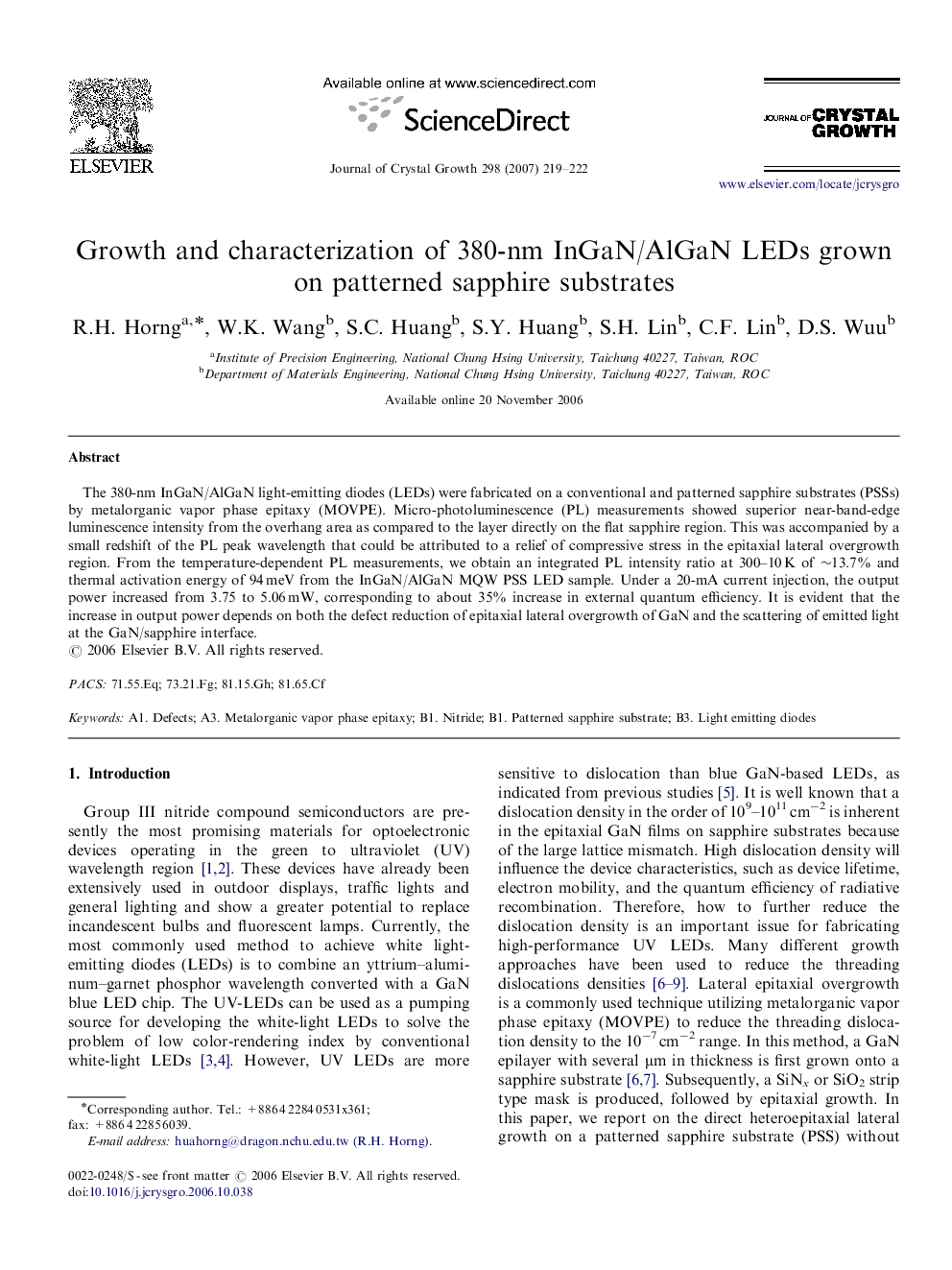| Article ID | Journal | Published Year | Pages | File Type |
|---|---|---|---|---|
| 1795911 | Journal of Crystal Growth | 2007 | 4 Pages |
The 380-nm InGaN/AlGaN light-emitting diodes (LEDs) were fabricated on a conventional and patterned sapphire substrates (PSSs) by metalorganic vapor phase epitaxy (MOVPE). Micro-photoluminescence (PL) measurements showed superior near-band-edge luminescence intensity from the overhang area as compared to the layer directly on the flat sapphire region. This was accompanied by a small redshift of the PL peak wavelength that could be attributed to a relief of compressive stress in the epitaxial lateral overgrowth region. From the temperature-dependent PL measurements, we obtain an integrated PL intensity ratio at 300–10 K of ∼13.7% and thermal activation energy of 94 meV from the InGaN/AlGaN MQW PSS LED sample. Under a 20-mA current injection, the output power increased from 3.75 to 5.06 mW, corresponding to about 35% increase in external quantum efficiency. It is evident that the increase in output power depends on both the defect reduction of epitaxial lateral overgrowth of GaN and the scattering of emitted light at the GaN/sapphire interface.
